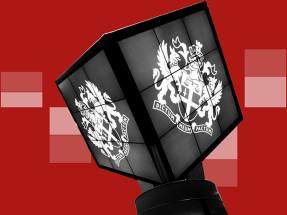IC Tip: at p
- Tip style
- Value
- Risk rating
- Medium
- Timescale
- Medium Term
Bull points
- Renewed customer interest
- Strong retention rates
- Cloud integration complete
Bear points
- Uncertain pace of hospital recovery
- Professional services stagnating
For most companies, geographic diversification is a virtue. An excessive dependence on one country or region generally leaves a business vulnerable to a number of external shocks.
Edinburgh-based software group Craneware (CRW), which sells its wares exclusively to the US healthcare sector, is a rare exception. The company counts some 40 per cent of the country’s registered hospitals as its customers, and its revenue is wholly derived from the sale of its products and services to these institutions.
When viewed in isolation, these facts might be a concern to prospective investors. Craneware already has a presence in two-fifths of its total addressable market with no ready plans for international expansion. Despite this, the group says that organic growth remains a top priority – a target that doesn’t seem far-fetched when viewed in the context of an increasingly costly and complex US healthcare system.
Craneware styles itself as “the market leader in automated value cycle solutions” – industry jargon for applications that help hospitals monitor financial performance. The company provides these solutions to track a patient’s journey through their initial registration with a medical provider to the payment of the bills for their care. It also offers products that help hospitals manage their pharmacy supply chains and labour productivity.
For Craneware’s clients, the job is only getting harder. At its full-year results, the software developer said operational strains, such as wage inflation and personnel shortages, alongside the rising cost of medical care and an ageing population, were posing a major challenge to US health systems. The Centers for Medicare and Medicaid Services, the agency that administers the US government’s health insurance programme, predicts that health spending as a share of gross domestic product (GDP) will grow from 18.3 per cent in 2021 to 19.6 per cent in 2031. Given these pressures, it’s crucial that providers have access to the data they need to make cost-effective decisions.
It's easy to lose sight of the importance of such services. As Peel Hunt notes, conversations around clinical “digital transformation” and the prospect of using artificial intelligence (AI) to analyse scan results or create personalised medicines can obscure the nitty-gritty of lessening the $1tn overall administrative burden on the US healthcare system. “With a quarter of this sitting within US hospitals, we believe there is a huge opportunity to digitally transform US hospitals and reduce administrative wastage,” the brokerage argues.
During the pandemic, many cash-strapped hospital groups reined in spending on nice-to-have infrastructure, such as software and related services. As a result, Craneware’s revenue and bottom-line growth was constrained, and the green shoots are only now starting to appear. Last month, analysts at Panmure Gordon pointed to “scope for a reacceleration” of the group’s organic growth – which has been stalled below 6 per cent a year since 2019.
“This is predominantly a result of the ongoing financial recovery of the US hospital customer base, but also as focus returns to selling new products as opposed to managing the transition to the cloud,” Panmure explained. The job of migrating customers to its Trisus cloud platform – last year’s primary strategic focus – is now complete. In simple terms, Trisus is designed to be a one-stop shop for medical data and analytics – thereby allowing health systems to better understand their operations and care for patients.
Investors have arguably failed to appreciate the group’s upgraded offering or the potential expansion of its customer base. Craneware shares now trade on 21 times Factset-compiled forecast earnings for the 12 months to June 2024, well below comparably-sized US-based healthcare IT peers such as HealthStream (US:HSTM) and Health Catalyst (US:HCAT), which trade on forward price/earnings (PE) multiples of 49 and 59, respectively.
Virtually all of Craneware’s 5 per cent reported revenue growth last year came from its software licensing business. Meanwhile, its professional services division – which helps hospitals process claim denials and deal with pharmacies – has struggled. Peel Hunt noted that this segment also lagged in the early part of the last decade when the impacts of the financial crisis were still being felt. “This is largely due to hospitals’ inability to commit time and resources to consume those professional services,” its analysts concluded.
The group’s adjusted earnings before interest, tax, depreciation and amortisation (Ebitda) nonetheless grew to $54.9mn in the most recent financial year, an increase of 6 per cent. Adjusted Ebitda margin expanded from 31 to 32 per cent, comfortably above a 30 per cent target. High levels of customer retention, which the company says were maintained at 90 per cent last year, provide Craneware with a strong foundation for future growth, regardless of the timing of a pick-up in professional services revenue.
Ultimately, the key factor that will determine Craneware’s trajectory is the pace of the recovery in the US hospital market. Data from management consultancy Kaufman Hall suggests that operating margins remain below historical levels, but that patients are resuming normal patterns of accessing care. Recovery, in other words, is non-linear. But there are reasons to believe that health systems will prioritise spending on digital infrastructure.
These long-overdue upgrades might even have a business parallel outside of the sector, according to analysts at Peel Hunt. “Despite the technology existing for much of the 2000s, it took the [global financial crisis of 2007-08] for banks to truly embrace digitalisation to extract better efficiencies,” the investment bank argued in a recent note to clients. Whether that parallel is apt is contestable, given the role branch-free challenger banks and the rise of the smartphone played in forcing banks to ultimately up their technology game. But if there is an ironclad rule of modern business, it is that every bureaucracy that can be digitised, eventually will be.
Signs of improving customer spending might even result in a change in the way Craneware is perceived by would-be acquirers. We’ve previously noted that Craneware’s high margins and leading position in its sector could make it a potential M&A target. While any potential buyer is yet to put its head above the parapet, the case for a takeover remains much the same as it was a year ago. Following the completion of its cloud upgrade project, Craneware’s management is turning its attention to the development of new applications and the extension of existing ones.
The group also intends to use AI and machine learning to make its production process more efficient. Again, this can only be a good thing in the sales pitch. Software systems are now a key piece of medical infrastructure, especially under a privatised healthcare system with few centralised sources of patient data.
Existing customers have a strong incentive to stick with Craneware, as an IT systems overhaul is itself costly and time-consuming. Improved functionality, usability and analytics functions are simply a bonus. With Craneware’s share still languishing in the post-Covid doldrums, investors could also find themselves rewarded for their loyalty down the line.
| Company Details | Name | Mkt Cap | Price | 52-Wk Hi/Lo |
| Craneware (CRW) | £526m | 1,490p | 2,250p / 1,060p | |
| Size/Debt | NAV per share* | Net Cash / Debt(-)* | Net Debt / Ebitda | Op Cash/ Ebitda |
| 739p | -£5.3mn | 0.1 x | 183% |
| Valuation | Fwd PE (+12mths) | Fwd DY (+12mths) | FCF yld (+12mths) | P/Sales |
| 20 | 2.0% | 4.4% | 3.3 | |
| Quality/ Growth | EBIT Margin | ROCE | 5yr Sales CAGR | 5yr EPS CAGR |
| 11.0% | 4.6% | 23.8% | -13.0% | |
| Forecasts/ Momentum | Fwd EPS grth NTM | Fwd EPS grth STM | 3-mth Mom | 3-mth Fwd EPS change% |
| 6% | 9% | 9.2% | 4.6% |
| Year End 30 Jun | Sales ($mn) | Profit before tax ($mn) | EPS (c) | DPS (p) |
| 2021 | 76 | 17.4 | 68.1 | 25.5 |
| 2022 | 166 | 30 | 88.1 | 29.8 |
| 2023 | 174 | 36 | 86.3 | 28.3 |
| f'cst 2024 | 184 | 37 | 87.8 | 29.6 |
| f'cst 2025 | 196 | 41 | 95.3 | 30.9 |
| chg (%) | +7 | +11 | +9 | +4 |
| Source: FactSet, adjusted PTP and EPS figures converted to £ | ||||
| NTM = Next Twelve Months | ||||
| STM = Second Twelve Months (i.e. one year from now) | ||||
| *Converted to £, includes intangibles of £355mn or 1,019p per share | ||||
















